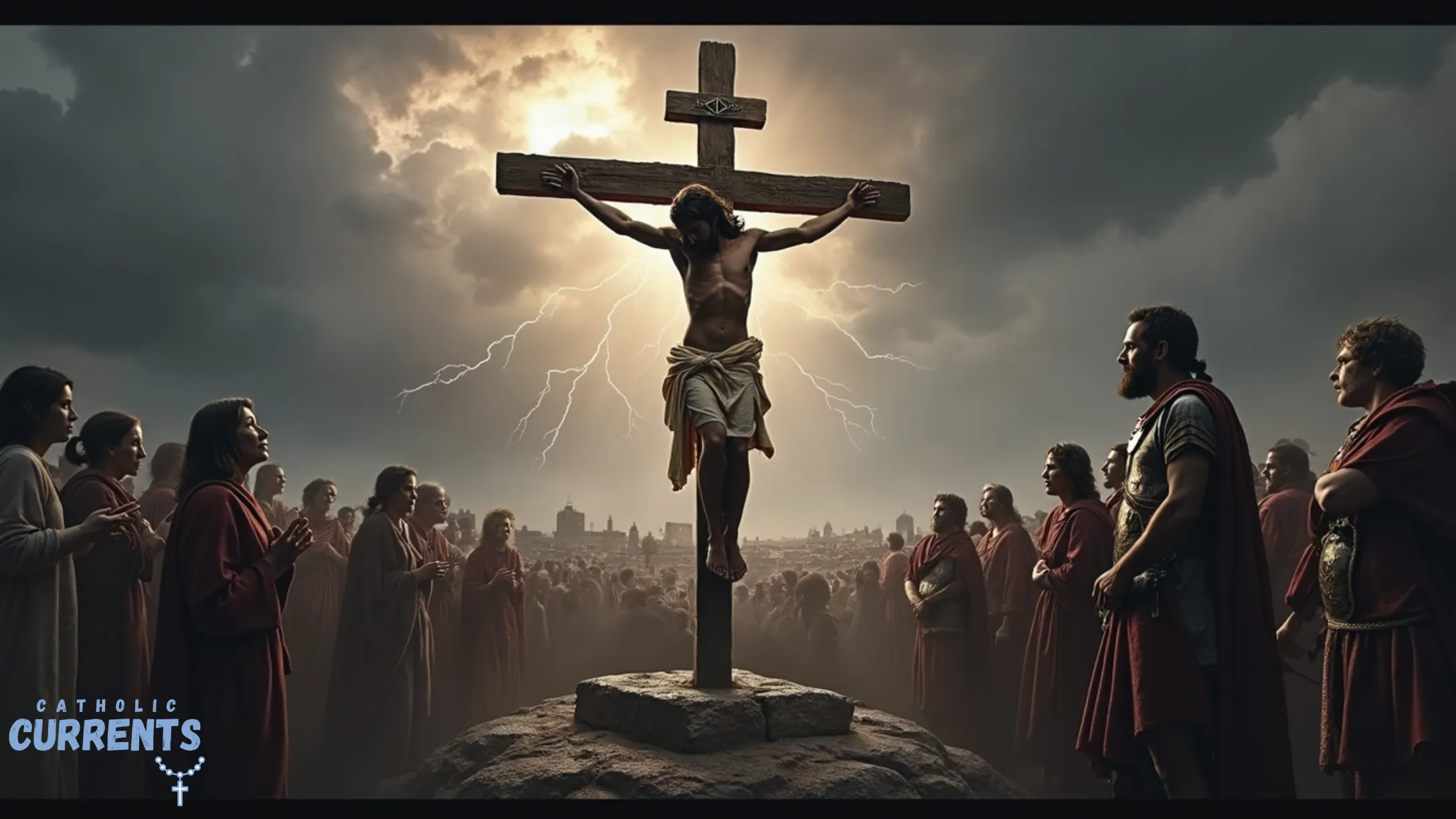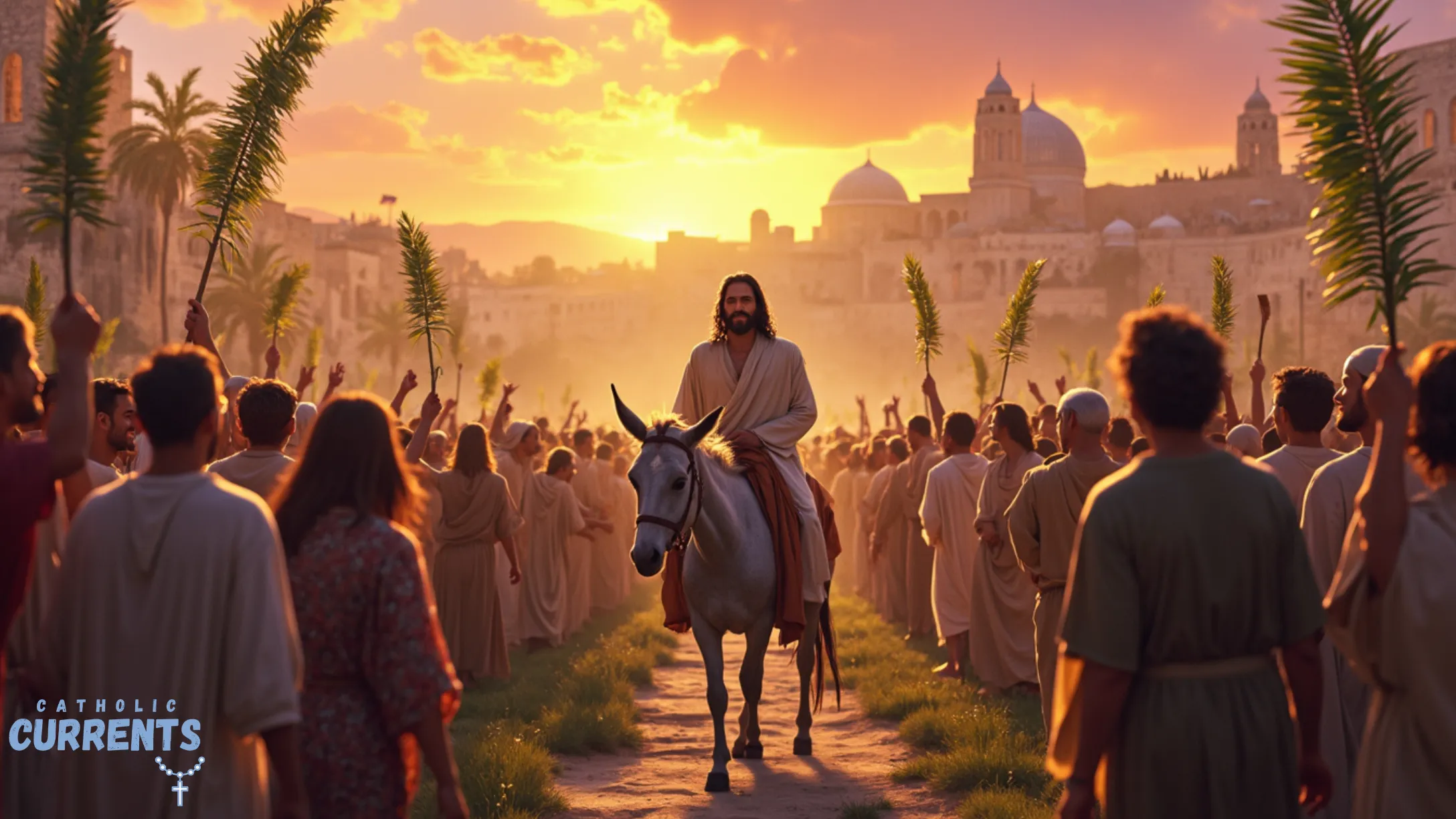
Introduction to Holy Week
Holy Week stands as a profound journey in the Christian liturgical calendar, marking the final week of Lent. As Christians worldwide prepare for Easter, this sacred time invites believers to deeply reflect on the life and sacrifice of Jesus Christ.
It is a week imbued with both solemnity and anticipation, as it leads to the celebration of the resurrection. This period is not only a time of mourning and contemplation but also a celebration of hope and renewal. Each day unfolds a significant chapter in the story of Christ's passion, encouraging the faithful to engage with the themes of redemption and grace that are ever-present during this pivotal time.
Palm Sunday: A Triumphant Entry

Palm Sunday marks the beginning of Holy Week, a time when Christians around the globe commemorate the events leading up to Jesus' crucifixion and resurrection. On this day, we reflect on Jesus' entry into Jerusalem, a moment described in the Gospels with great reverence and anticipation. As Jesus rode into the city on a donkey, crowds gathered to greet Him, laying palm branches and their cloaks on the road, heralding Him as the long-awaited Messiah.
The symbolism of palm branches holds deep significance, representing victory, peace, and eternal life. In the context of Jesus' arrival, they were a powerful testament to His kingship, a declaration of hope and salvation. This act of laying down palms was both a celebration and a foreshadowing of the journey that lay ahead—a journey of suffering, sacrifice, and ultimately, resurrection.
As the start of the Holy Week journey, Palm Sunday invites Christians to embark on a path of reflection and spiritual renewal. It sets the stage for contemplation and devotion, encouraging believers to walk alongside Christ in His final days, nurturing a deeper connection to their faith and its profound mysteries.
Holy Monday and Holy Tuesday: Teachings and Parables

As the echoes of palm branches waving in celebration fade, Jesus enters the temple on Holy Monday and Tuesday, imparting profound teachings and sharing parables that continue to enlighten believers today. These days are marked by Jesus’ deliberate presence in the temple, where He engages with religious leaders and the people, challenging their understanding and inviting reflection.
During these days, Jesus shares some of His most impactful parables, each carrying a deeper meaning about the Kingdom of God. One such parable is the Parable of the Tenants, which illustrates the rejection of prophets and ultimately the Son, highlighting themes of stewardship and accountability to God. Another is the Parable of the Fig Tree, serving as a poignant reminder to bear fruit and live a life of genuine faith.
These teachings and parables invite us to ponder our own lives and spiritual journeys, encouraging us to live in alignment with the values of love, justice, and humility. As we progress through Holy Week, these stories remind us of the call to reflect deeply on our faith and the transformative power of Jesus’ words.
Spy Wednesday: A Day of Betrayal

As we journey deeper into Holy Week, we arrive at Spy Wednesday, a day shrouded in intrigue and betrayal. The term "Spy Wednesday" finds its roots in the clandestine actions of Judas Iscariot, who, on this day, conspired to betray Jesus to the chief priests for thirty pieces of silver. This clandestine agreement sets the stage for the unfolding of the Passion narrative.
Judas' betrayal is not merely a historical event; it carries profound implications for the Christian faith. It serves as a stark reminder of the complexities of human nature and the potential for betrayal lurking within. Judas, one of the twelve disciples, was entrusted with Jesus' teachings and love, yet his actions reveal the tragic consequences of succumbing to greed and disillusionment.
The events of Spy Wednesday prompt reflection on loyalty, trust, and the nature of sin. As believers contemplate Judas' actions, they are invited to examine their own hearts, seeking to align their lives with the values of faithfulness and integrity. This day, though somber, deepens the spiritual journey through Holy Week, urging introspection and a renewed commitment to the path of Christ.
Maundy Thursday: The Last Supper

Maundy Thursday marks a profound moment in Holy Week as believers reflect on the events of the Last Supper. Jesus gathered with His disciples in the upper room, sharing a meal that would become a cornerstone of Christian worship. During this supper, Jesus instituted the Eucharist, offering bread and wine as His body and blood. This sacred act invites Christians to partake in His sacrifice, fostering a deep spiritual connection with Christ.
In an act of humility and love, Jesus washed the feet of His disciples. This gesture, often commemorated in rituals today, underscores the essence of servanthood and the call to love one another selflessly. By performing this humble task, Jesus illustrated that true leadership is rooted in service and compassion.
Maundy Thursday invites believers to reflect on the profound significance of these actions. The Eucharist represents the perpetual presence of Christ, while the foot-washing ceremony challenges Christians to embody humility. As the journey through Holy Week continues, these events inspire a deeper commitment to living out the teachings of Jesus in daily life, embracing both His sacrifice and His love.
Good Friday: The Crucifixion

Good Friday stands as a poignant day of reflection within Holy Week, marking the crucifixion of Jesus Christ. On this solemn day, Christians around the world pause to remember the profound sacrifice made by Jesus as He was nailed to the cross at Golgotha. The events of Good Friday unfold with Jesus enduring immense suffering, ultimately surrendering His spirit with the words, "It is finished." This moment signifies the fulfillment of His earthly mission and the immense love He has for humanity.
The significance of the crucifixion lies at the heart of Christian theology. Through His death, Jesus offered redemption and the promise of eternal life, bridging the gap between God and mankind. This selfless act of love is a powerful reminder of the depths of divine grace and mercy.
The somberness of Good Friday invites introspection and reverence. It is a day marked by prayer, fasting, and solemn services, encouraging believers to contemplate the cost of salvation. As the world stands still in remembrance, Good Friday becomes a time to embrace gratitude and reflect on the enduring impact of Christ's sacrifice, paving the way for the hope and renewal that follows on Easter Sunday.
Holy Saturday: A Day of Waiting

As the world quietly transitions from the sorrow of Good Friday to the joy of Easter Sunday, Holy Saturday emerges as a profound day of reflection and anticipation. It is a time when Christians pause in the shadow of the tomb, awaiting the dawn of resurrection. This day embodies a sacred stillness, inviting believers to meditate on the mysteries of faith and the promise of renewal.
Traditionally, Holy Saturday serves as a vigil, a time of patient waiting and quiet hope. In many churches, the day is marked by the Easter Vigil, a ceremony that begins after sunset and includes the lighting of the Paschal candle, symbolizing the light of Christ overcoming darkness. This ceremony often involves the blessing of fire, water, and the renewal of baptismal vows, drawing the faithful into a deeper connection with their faith.
For many, Holy Saturday is also a day of preparation, both spiritually and physically, as families and communities ready themselves for the celebration of Easter. It is a moment to pause, reflect, and prepare hearts for the joy that is to come, reinforcing the belief in the transformative power of Christ's resurrection.
Easter Sunday: Resurrection and Renewal

Easter Sunday stands as the glorious pinnacle of the Christian faith, a day that resonates with joy and celebration across the globe. It marks the resurrection of Jesus Christ, a trip victory over death that fills believers with hope and renewal. Churches burst into life with jubilant hymns and vibrant decorations, as congregations gather to rejoice in this miraculous event.
The significance of Easter extends far beyond the confines of the church walls. For Christians worldwide, it embodies the promise of new beginnings and the triumph of light over darkness. This day is a reminder that even in the midst of despair, there is always the possibility of transformation and renewal.
The themes of resurrection and renewal inspire believers to reflect on their own lives, encouraging a spirit of introspection and growth. As nature itself awakens with the arrival of spring, Easter Sunday invites us to embrace the hope and renewal that Christ's resurrection signifies, instilling in us a renewed sense of purpose and faith.
Traditions Across Denominations
As Holy Week unfolds, Christians across the world embrace diverse traditions that reflect the rich tapestry of faith within their communities. Each denomination brings unique customs and rituals to this sacred time, highlighting the shared essence of the journey from Palm Sunday to Easter Sunday. From solemn processions to reflective prayer services, the varied ways Holy Week is celebrated offer a glimpse into the depth of devotion and reverence marking these days.
In Catholic and Orthodox traditions, the week is often marked by elaborate liturgies and ceremonies, while Protestant communities may focus on sermon series and Bible studies that delve into the events of the Passion. At the heart of these practices is a communal spirit, as believers gather in churches, homes, and public spaces to commemorate and reflect on Jesus' sacrifice and resurrection.
Beyond the communal gatherings, Holy Week also invites personal reflection. Many individuals take this time for introspection, engaging in practices like fasting and prayer to deepen their spiritual connection. This blend of community and personal devotion ensures that Holy Week remains a profound period of unity, reflection, and renewal for Christians worldwide.
Frequently Asked Questions
As we journey through Holy Week, questions often arise about its significance and the traditions that accompany it. Here are some common inquiries:
What is the purpose of Holy Week? Holy Week commemorates the final week of Jesus' earthly life, leading to His crucifixion and resurrection. It is a time for Christians to reflect on His sacrifice and celebrate the hope of resurrection.
Why are palm branches used on Palm Sunday? Palm branches symbolize victory and peace. They were laid before Jesus as He entered Jerusalem, marking the beginning of Holy Week with a triumphant welcome.
What is the significance of Maundy Thursday? Maundy Thursday remembers the Last Supper, where Jesus instituted the Eucharist and demonstrated humility by washing His disciples' feet.
Why is Good Friday called "good"? Despite the somber events of Jesus' crucifixion, it is termed "good" because it led to His resurrection, offering salvation to believers.
How do different denominations celebrate Holy Week? Denominations vary in their observances, from solemn liturgies and processions to prayer services and personal reflections, each adding depth to the shared journey.
Through these clarifications, we hope to deepen your understanding and appreciation of Holy Week's rich traditions and profound significance.
Conclusion: Reflecting on Holy Week
Holy Week takes us on a profound journey, beginning with Palm Sunday's joyous welcome of Jesus into Jerusalem, moving through the somber reflections of Spy Wednesday and Good Friday, and culminating in the triumphant joy of Easter Sunday. Each day invites us to pause and reflect deeply on the events that shaped our faith.
As we navigate these sacred days, we are reminded of the immense love and sacrifice that lies at the heart of Christianity. This week is not just a series of events but a call to engage with the core themes of redemption, hope, and renewal.
Let us take this opportunity to reflect on the significance of Holy Week in our own lives, allowing its profound messages to inspire and transform us in our spiritual journey.


